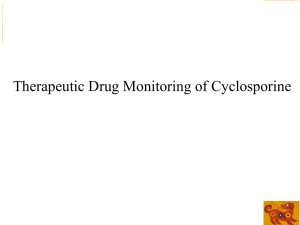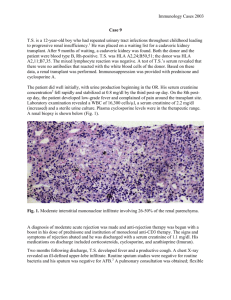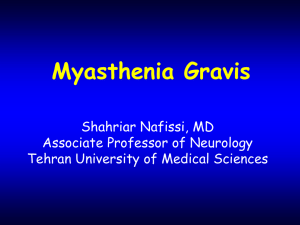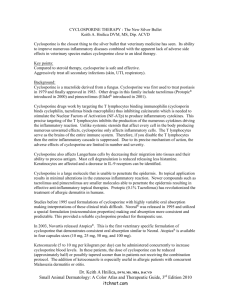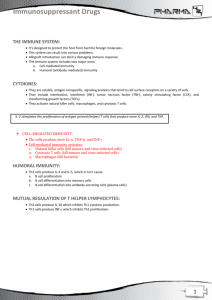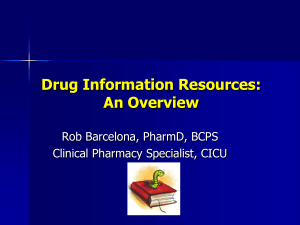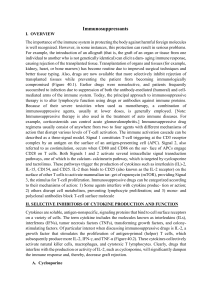Cyclosporine - Vanderbilt University Medical Center
advertisement
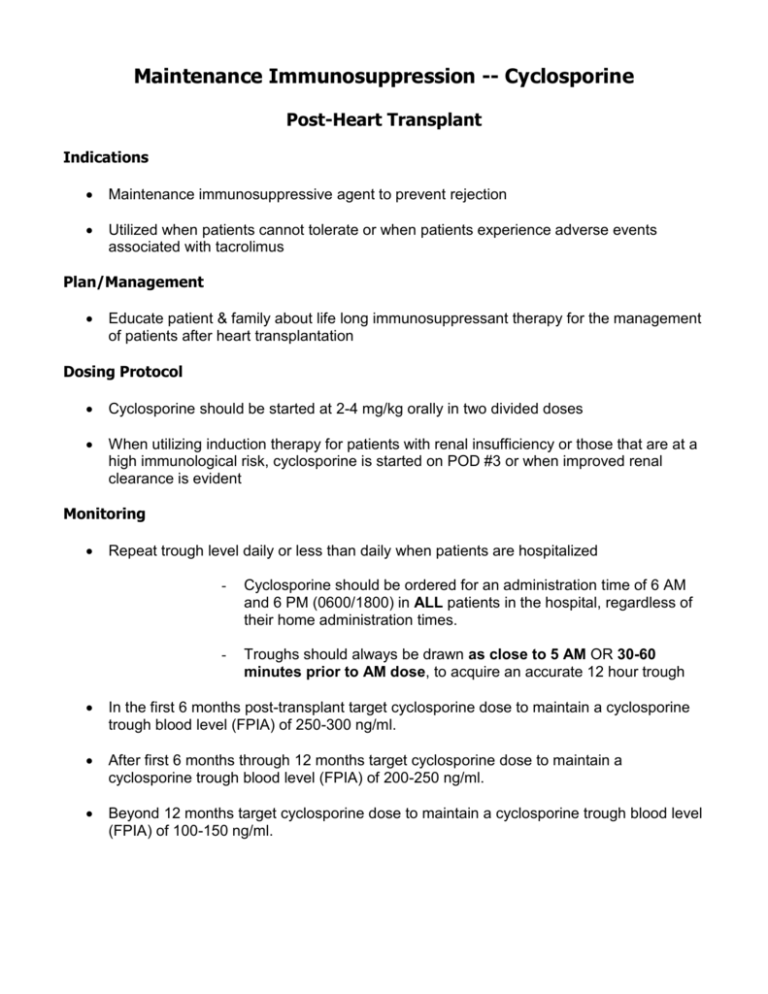
Maintenance Immunosuppression -- Cyclosporine Post-Heart Transplant Indications Maintenance immunosuppressive agent to prevent rejection Utilized when patients cannot tolerate or when patients experience adverse events associated with tacrolimus Plan/Management Educate patient & family about life long immunosuppressant therapy for the management of patients after heart transplantation Dosing Protocol Cyclosporine should be started at 2-4 mg/kg orally in two divided doses When utilizing induction therapy for patients with renal insufficiency or those that are at a high immunological risk, cyclosporine is started on POD #3 or when improved renal clearance is evident Monitoring Repeat trough level daily or less than daily when patients are hospitalized - Cyclosporine should be ordered for an administration time of 6 AM and 6 PM (0600/1800) in ALL patients in the hospital, regardless of their home administration times. - Troughs should always be drawn as close to 5 AM OR 30-60 minutes prior to AM dose, to acquire an accurate 12 hour trough In the first 6 months post-transplant target cyclosporine dose to maintain a cyclosporine trough blood level (FPIA) of 250-300 ng/ml. After first 6 months through 12 months target cyclosporine dose to maintain a cyclosporine trough blood level (FPIA) of 200-250 ng/ml. Beyond 12 months target cyclosporine dose to maintain a cyclosporine trough blood level (FPIA) of 100-150 ng/ml. Special Considerations Multiple manufacturers make cyclosporine as different pharmacologic preparations. Neoral, Gengraf, and Sandimmune are three common brands used in our program. Different brands of cyclosporine are not interchangeable. Ensure that the patient remains on the same preparation to make certain we achieve accurate and reliable levels. When calling in a prescription to the patient's pharmacy, make sure to state specifically which brand of cyclosporine the patient is receiving and is state "No Substitution". Patients with renal dysfunction (creatinine >2.0 mg/dl, or creatinine clearance < 50 ml min), consider consultation with transplant physician for individual management. When making adjustments in dosing, nurses may increase or decrease a total of 50mg total daily dose. AVOID split dosing of Cyclosporine (Ie Neoral 100mg AM, 75mg PM) When converting from oral to IV preparation for hospital use. IV dose is 1/3 of total oral daily dose in divided doses every 12 hours as a continuous infusion. Any patient getting IV cyclosporine, consult Transplant Pharmacist @ (615) 484-3129. When initiating any other drug that will interact with cyclosporine (-azole antifungal, nondihydropyridine CCB etc), consider a dose reduction due to elevation of cyclosporine levels with these medications Follow-Up In outpatients, check a trough 5-10 days following any dose adjustment or with the addition of a drug that may potentially interact with cyclosporine. (Consult pharmacist with any questions) If chronic renal insufficiency, check BMP in addition to trough Monitor Uric Acid and Magnesium per lab protocol and as needed Physician Consult For goal adjustment in patients with CrCl <50, dose adjustments in increments larger than 50mg/day, when converting to PO to IV form, or if patient requests to change to different brand of cyclosporine. References Robbins RC, Barlow CW, Oyer PE, et al. Thirty years of cardiac transplantation at Stanford University. J Thoracic and Cardiovascular Surg. 1999; 117(5):939-51 Neoral [package insert]. East Hanover, NJ: Novartis Pharmaceuticals Corp; 2001 REVISED 11/2010
